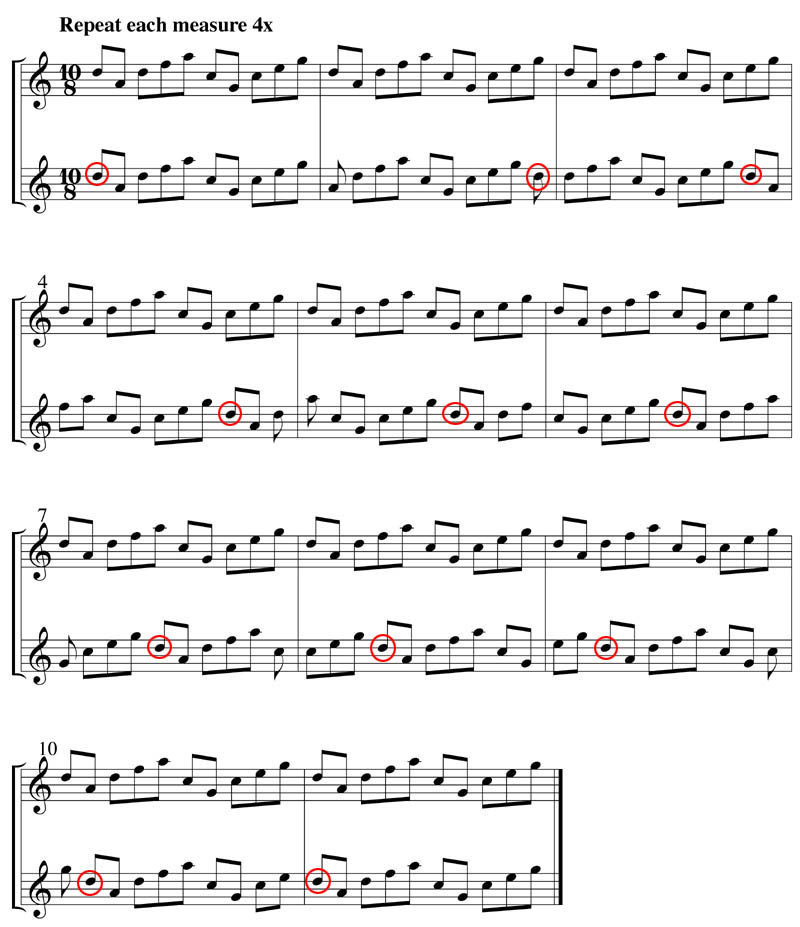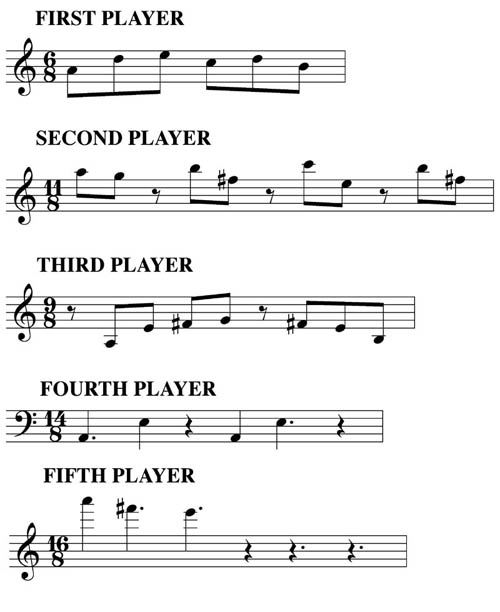1. Phasing with Equal Modular Units. The simplest form of the phasing process involves taking two identical modular units and shifting each element rhythmically forward or backward within one while the other remains unchanged. To illustrate the result, we have taken musical ideas similar to our last piece and applied this process. To elucidate the analysis, we have circled one element so that its changing position can be traced throughout the piece. The composition does not leave much room for compositional choice once the materials are chosen and the particular system is set in motion. However, the rhythmic patterns that emerge from the interplay between the voices can be intriguing.
This type of work also asks for the listener to apply the ear in unique ways since a traditional narrative is absent. Try to focus, for example, on only the low A's and G's throughout as you hear the piece unfold. What one also notices is that despite the fact that tonal/modal materials are used in this style, the concept of dissonance is suspended. The idea of tension relies more on the changing patterns of synchronization. In our performance below, each stage of the process is repeated four times.
mp3 download (harp and vibraphone arrangement)
2. Phasing with Unequal Modular Units. When juxtaposing multiple modular units, each with their own duration, the resultant patterns can become that much more complex. Although the composer is, of course, at liberty to transform each individual part (similar to our previous two pieces), allowing them to play out without external modification can be aesthetically rewarding on its own.
In the following piece we have created five disparate patterns in A Dorian in which each modular unit possesses a unique duration. In our performance below, each pattern is introduced successively rather than simultaneously so that the listener can appreciate each design and its interplay with the existing voices before another enters.
To conclude such a piece, we can allow each voice to repeat its pattern until all end together. However, because of the numerous voices and their asymmetrical individual durations, this would become very tiresome. Instead, we have improvised a closing wherein each player in sequence arrives at, and sustains, the tonic, after which a brief codetta is improvised.
mp3 download (ensemble arrangement - vibraphone, clarinet, piano, marimba, and harp)




